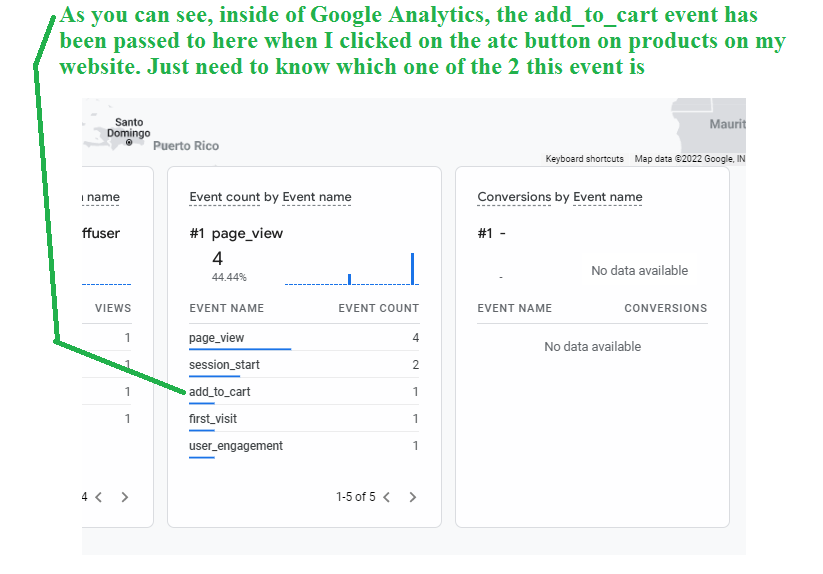The Advantages of Using Remarketing In Google Analytics
The Advantages of Using Remarketing In Google Analytics
Blog Article
Optimize Your ROI With Remarketing in Google Analytics
By using the power of customer data and customizing advertisements to specific target market segments, organizations can considerably amplify their conversion prices. The trip to optimizing ROI through remarketing is a nuanced course paved with insights and chances that can reshape the trajectory of your advertising undertakings.
Comprehending Remarketing in Google Analytics
Understanding remarketing in Google Analytics is important for enhancing your electronic advertising and marketing technique. Remarketing enables you to target users that have actually formerly seen your site or connected with your app, presenting them with customized advertisements as they search other sites or use various other applications within the Google Show Network. This approach aids maintain your brand top of mind and urges individuals to return to your website, inevitably increasing the possibility of conversion.
By making use of Google Analytics, you can track the performance of your remarketing campaigns, obtaining important insights right into user actions, involvement, and conversions. This data allows you to improve your targeting, bidding, and messaging techniques to enhance the overall effectiveness of your projects.
Additionally, understanding the various kinds of remarketing checklists readily available in Google Analytics, such as standard, vibrant, and similar target markets, allows you to create personalized and highly fractional projects customized to details user sectors. This degree of granularity can dramatically enhance the importance and influence of your remarketing initiatives, ultimately maximizing your roi.
Establishing Remarketing Checklists
To efficiently apply remarketing projects in Google Analytics, the preliminary step entails creating and configuring remarketing lists targeting details customer sections based on their communications with your site or application. By setting up remarketing listings, you can tailor your marketing efforts to get to individuals who have currently shown passion in your service or products.
To start, navigate to the Admin area of your Google Analytics account and select the Residential or commercial property where you want to develop the remarketing list. Then, under the Property column, click 'Audience Definitions' and pick 'Audiences.' Next, click on the red 'New Audience' button and choose 'Produce New' to specify the specifications for your remarketing listing.

Crafting Reliable Remarketing Advertisements

When crafting your advertisements, concentrate on creating eye-catching headings and compelling visuals that stick out to prospective clients. Integrate solid calls-to-action that motivate users to revisit your site and complete a wanted action. Make use of dynamic remarketing to show individualized ads including services or products that users have actually previously watched on your site.
Furthermore, ensure that your ads are mobile-friendly because a significant portion of internet web traffic originates from mobile phones. Examination various advertisement variations to identify which designs and messages drive the finest results. By continuously refining and enhancing your remarketing advertisements based on performance information, you can maximize their effectiveness and improve your return on financial investment.
Analyzing Remarketing Efficiency

With Google Analytics, marketing experts can track the performance of their remarketing projects in real-time, permitting them to identify patterns, patterns, and areas for renovation promptly. By evaluating the data, online marketers can figure out which advertisements are executing well, which target market sections are reacting favorably, and which networks are driving one of the most conversions. This degree of granularity enables marketing experts to make data-driven decisions to enhance their remarketing advocate better outcomes.
Maximizing ROI With Remarketing
Evaluating remarketing information in Google Analytics allows marketing experts to determine possibilities for maximizing roi (ROI) through calculated adjustments - What Is “Remarketing” In Google Analytics?. To take full advantage of ROI with remarketing, it is vital to comprehend the actions of your audience. By evaluating user communications, such as the web pages they visited, the products they viewed, or the activities they tackled your site, you can tailor your remarketing projects better
Segmenting your audience based on their habits allows you to produce tailored and targeted ads that are most likely to reverberate with them. By revealing appropriate ads to details sections of your target market, you can enhance the opportunities of conversion and inevitably enhance your ROI.
Moreover, examining different ad creatives, messaging, and offers can help determine what resonates ideal with your audience. A/B screening allows you to try out different aspects of your advertisements to identify what drives the greatest involvement and conversion rates.
Verdict
Finally, maximizing ROI with remarketing in Google Analytics calls for a strategic technique to examining user habits, segmenting audiences, creating customized ads, and maximizing campaign performance. By leveraging data-driven understandings and evaluating various techniques, businesses can improve their remarketing efforts to drive higher engagement and conversion rates. This systematic strategy makes sure that resources are link successfully designated towards optimizing rois in remarketing campaigns.
Next, click on the red 'New Target market' switch and select 'Produce New' to specify the parameters for your remarketing checklist.
By continually refining and optimizing your remarketing advertisements based image source on performance information, you can maximize their efficiency and enhance your return on financial investment.
By delving right into these understandings, online marketers can acquire an extensive understanding of just how their remarketing efforts are reverberating with their target audience and driving conversions. To make best use of ROI with remarketing, it is essential to comprehend the behavior of your audience.In final thought, optimizing ROI with remarketing in Google Analytics needs a calculated approach to analyzing user behavior, segmenting audiences, creating customized advertisements, and maximizing project efficiency.
Report this page